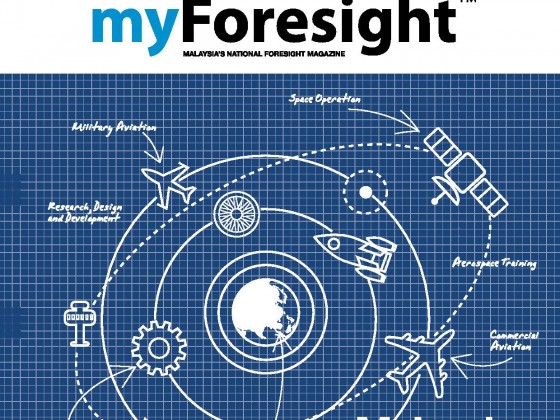by | Mohd Yusoff Sulaiman, President & Chief Executive Officer, MIGHT
FORESIGHT has been loosely defined as the ability to predict or plan for the future. As the pace of change in our interconnected world continues to accelerate, those who can best predict, plan and respond to changes are those most likely to succeed.
Strategic planning is nothing new to Malaysians. Malaysia is indeed famous for its efforts in long-term strategic planning reflected by the importance placed on the Malaysia Plans, Industrial Master Plans, New Economic Model and Vision 2020.
Nor is strategic planning new to companies, many of which employ strategic planners who regularly review and craft new plans for companies that look five or 10 years down the road. This process is of even greater importance for technology companies that operate in a rapidly evolving, highly complex and often volatile environment.
In 1993, when Prime Minister Tun Dr Mahathir Mohamad created the Malaysian Industry- Government Group for High Technology (MIGHT), now an agency in the Prime Minister’s Department, he tasked his science adviser and the MIGHT team to “prospect for business opportunities for Malaysia through strategic exploitation of high technology for the attainment of the Vision 2020 objectives”.
Since then, MIGHT has used the Delphi Method, a systematic approach to forecasting based on input from experts from industry, government and academia. One of MIGHT’s earliest contributions to national economic development came in the form of the National Aerospace Blueprint, which has helped drive 11 per cent growth in the industry annually and most recently, the Shipbuilding and Ship Repair Strategic Industry Plan, which is expected to drive the industry’s contribution of RM6.6 billion to gross national income by 2020.
As with the vast majority of MIGHT’s strategic industry plans, both reports go beyond conventional desktop research and interviewing and leverage off the unique nature of MIGHT’s position between industry and government. Calling on about 100 members, MIGHT has gone beyond the norms of government or business planning to include the insights of policy makers, companies, academics, researchers, operators and regulators. The result has been plans that are directly in touch with current needs and provide solutions to issues involving multiple stakeholders. Over the years, the process has evolved and adapted to the latest techniques and methods for foresighting change and opportunities.
Forecasting has moved beyond breakdowns by vocational boundaries to inculcate a multidisciplinary approach to identifying greenfield opportunity through consolidated decision making based on scientific evidence.
The revised approach has the ability to go beyond Malaysia’s traditional follower-strategy that has dominated planning and left the country susceptible to low-cost regional competition in areas such as automotive manufacturing and electronics.
Foresight gives Malaysia the tools needed to identify blue ocean opportunities and markets by developing products in new and emerging technology and areas of competitive advantage.
In April, MIGHT will launch the National Foresight Institute, whose Foresight team has applied these advanced and proven methodologies to give Malaysia such guidance as the National Technology Foresight Study and the preliminary Railway Industry Strategic Plan 2030.
However, Foresight can no longer afford to be the sole domain of MIGHT. Like South Korea, Finland, Singapore and Brazil, Malaysia must adopt Foresight at the national level and streamline this process into national planning initiatives.
The National Foresight Institute has made strides and the institute’s Foresight now provides some of the most fundamental input on the nation’s science and technology policy through direct input to the National Science and Research Council. The seismic importance of improving the nation’s ability to track evolving trends, predict and adapt to probable future outcomes cannot be understated.
Foresight must go beyond technology forecasting and planning and be woven into the industrial and economic planning works of this country.
Only then will Malaysia be sufficiently outfitted to adapt to the coming changes of the world around us, seize new opportunities presented and create a global role as a high-income, high-performance competitor in the industries of the future.
This article was published in New Straits Times| 27 February 2012









